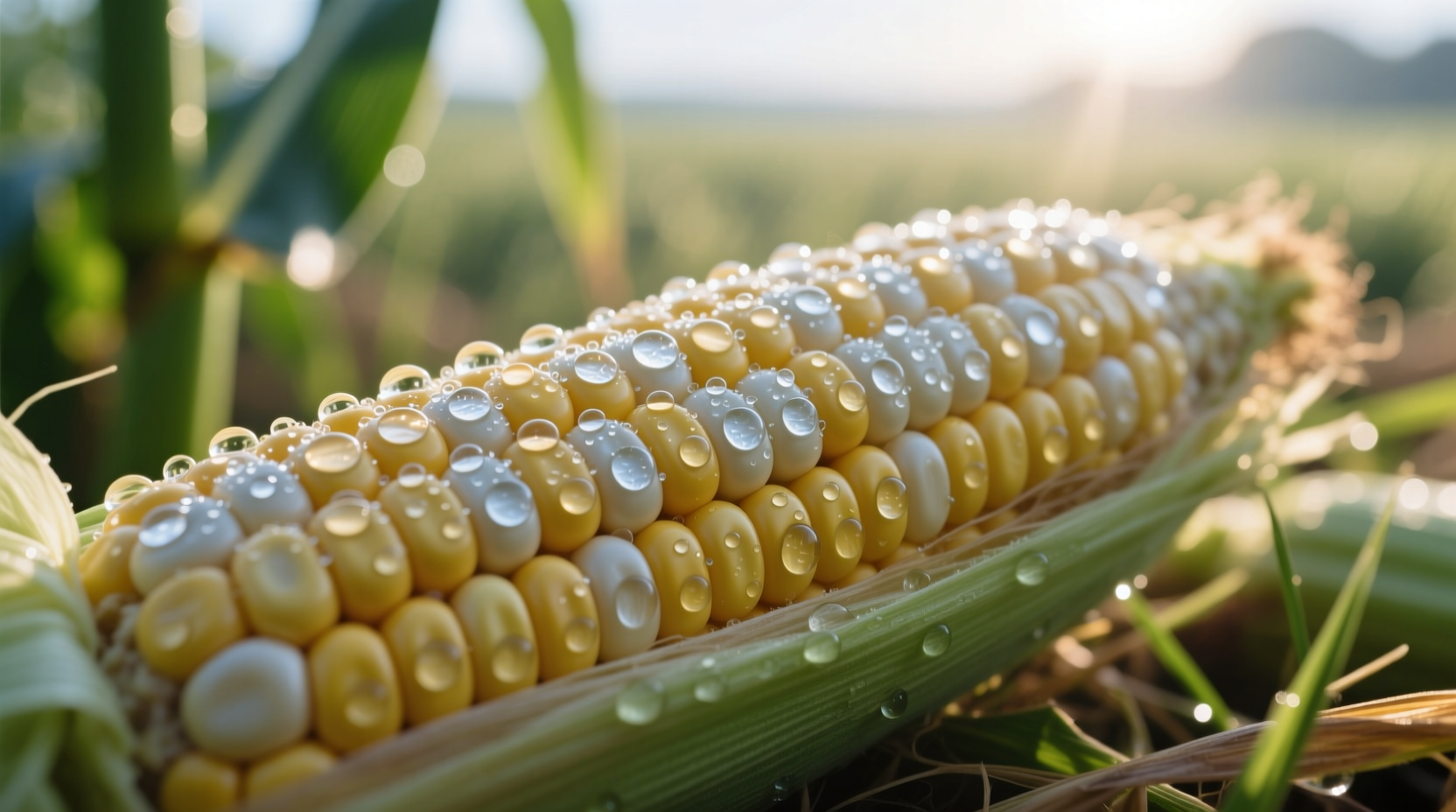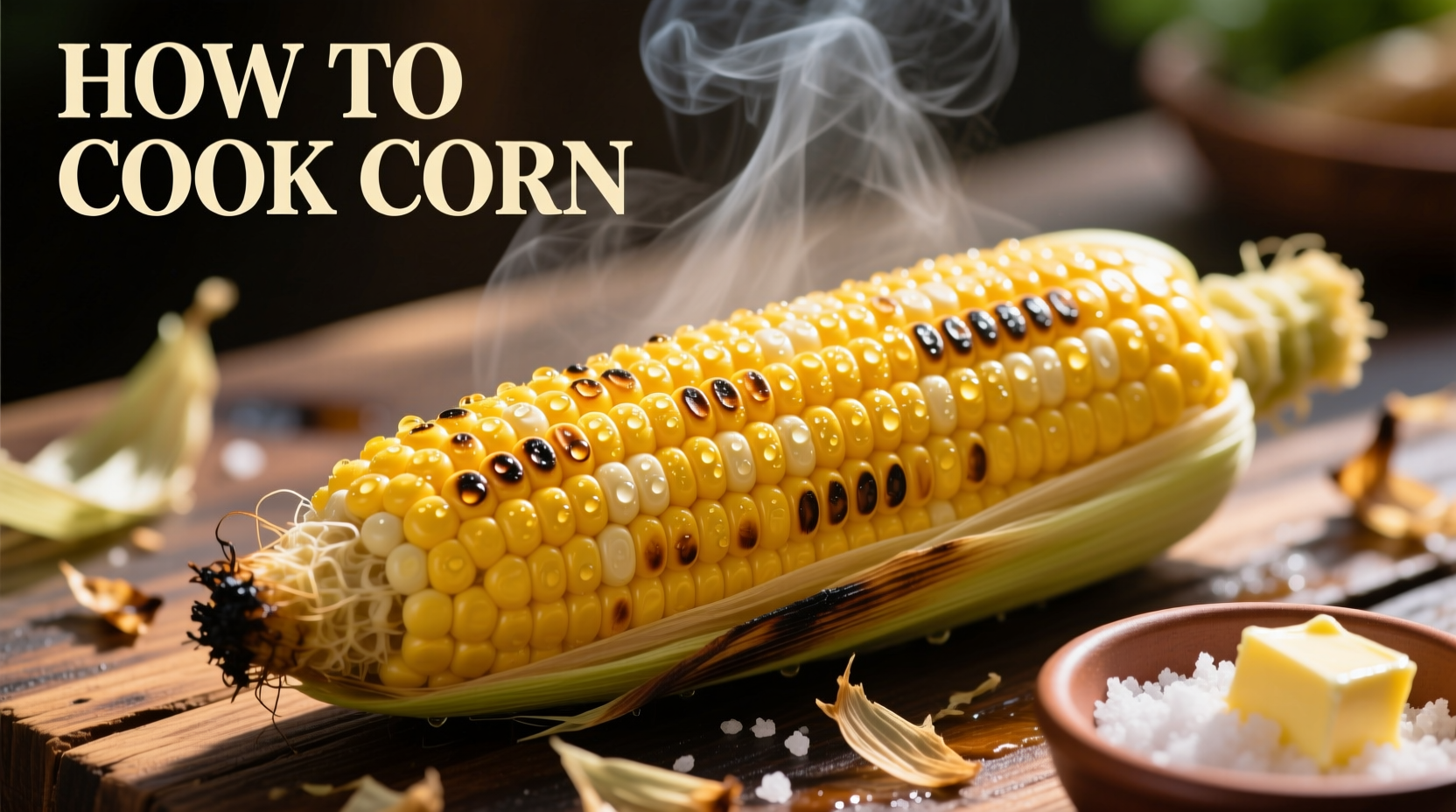Mastering the Art of Cooking Corn: From Selection to Serving
Nothing says summer quite like perfectly cooked corn on the cob. Whether you're preparing a backyard barbecue or a simple weeknight side dish, knowing how to cook corn properly makes all the difference between tough, flavorless kernels and sweet, tender perfection. This comprehensive guide walks you through every step of the corn-cooking process, verified by culinary experts and food science principles.
Choosing and Preparing Your Corn
Selecting fresh corn is the first critical step. Look for bright green husks that feel snug against the kernels, with moist, golden-brown silk. Avoid husks that are dry, yellowed, or have visible insect damage. According to the USDA Agricultural Research Service, sweet corn peaks in flavor within 24 hours of harvest, so freshness matters more than you might think.
Before cooking, properly shuck your corn:
- Peel back the husk from the top, removing all silk strands
- Rinse under cold water to remove any remaining silk
- Soak in cold water for 10 minutes if grilling with husk on
| Corn Freshness Indicator | Fresh Corn | Stale Corn|
|---|---|---|
| Husk Appearance | Bright green, snug against kernels | Dry, yellowed, loose |
| Silk Condition | Moist, golden-brown | Dry, blackened |
| Kernels | Plump, milky liquid when punctured | Shrunken, watery or dry |

Boiling Method: The Classic Approach
Boiling remains the most popular method for cooking corn, and for good reason—it's simple and reliable. Contrary to popular belief, you don't need salt in the water; in fact, adding salt can make kernels tougher according to research from the University of Illinois Extension.
Follow these steps for perfect boiled corn:
- Fill a large pot with enough water to cover the corn
- Bring water to a rolling boil
- Carefully add shucked corn using tongs
- Reduce heat to maintain a gentle boil
- Cook for 3-5 minutes (never more than 7)
- Remove with tongs and serve immediately
The key timing insight? Fresh, sweet corn requires significantly less cooking time than older corn. Overcooking is the most common mistake home cooks make, turning sweet kernels tough and starchy.
Alternative Cooking Methods for Different Results
While boiling is classic, different cooking methods yield distinct textures and flavors. Choose based on your desired outcome and available equipment.
Grilling Corn
Grilling imparts a delicious smoky flavor that complements corn's natural sweetness. You can grill corn two ways:
- With husk: Soak corn in water for 10-15 minutes, then grill over medium heat for 15-20 minutes, turning occasionally
- Without husk: Brush shucked corn with oil, grill over medium-high heat for 8-10 minutes, turning frequently
Microwave Method
For the quickest preparation (ideal for weeknights), try microwaving:
- Leave corn in husk (do not remove)
- Place on microwave-safe plate
- Microwave on high for 3-4 minutes per ear
- Let stand for 5 minutes before carefully removing husk (steam will be hot!)
This method, verified by National Center for Home Food Preservation experts, preserves more nutrients than boiling while requiring minimal cleanup.
Oven Roasting
For a hands-off approach with concentrated flavor:
- Preheat oven to 375°F (190°C)
- Wrap shucked corn in foil with a pat of butter and herbs
- Rose for 20-25 minutes
- Unwrap and serve immediately
Flavor Enhancements That Elevate Simple Corn
While butter and salt are classics, these professional variations can transform your corn:
- Mexican street corn style: After cooking, brush with mayonnaise, sprinkle with cotija cheese, chili powder, and lime juice
- Herb compound butter: Mix softened butter with chopped fresh herbs like cilantro, chives, or tarragon
- Spice blends: Try smoked paprika, garlic powder, or everything bagel seasoning
- Lime zest infusion: Grate fresh lime zest over hot corn for bright citrus notes
Chef Antonio Rodriguez notes: "The secret to maximizing corn's natural sweetness is minimal intervention. Fresh, high-quality corn needs little more than proper cooking technique to shine. Save elaborate preparations for when corn isn't at its seasonal peak."
Troubleshooting Common Corn Cooking Problems
Even experienced cooks encounter issues with corn. Here's how to solve the most common problems:
- Tough kernels: You're overcooking. Reduce time to 3-4 minutes for boiling or 6-8 minutes for grilling.
- Bland flavor: Corn may be past its prime. Add a teaspoon of sugar to boiling water to enhance natural sweetness.
- Dry texture: You removed corn from heat too early. Let it rest in residual heat for 2 minutes after cooking.
- Uneven cooking: Rotate corn frequently when grilling or ensure water is at a consistent boil when boiling.
Serving and Storage Guidelines
Corn is best served immediately after cooking. If you must hold it:
- Keep in warm water (not boiling) for up to 30 minutes
- Wrap in foil for up to 20 minutes
- Never keep cooked corn at room temperature longer than 2 hours
For leftovers, remove kernels from the cob and store in an airtight container in the refrigerator for 3-5 days. Cooked corn freezes well for up to 6 months—blanch kernels for 2 minutes before freezing.
Frequently Asked Questions
How long should I boil corn on the cob?
Fresh corn needs only 3-5 minutes in boiling water. Older corn may require up to 7 minutes, but never exceed this time as it makes kernels tough.
Should I add salt to the water when boiling corn?
No, salt can make corn kernels tougher. For the most tender results, cook corn in plain boiling water without salt.
Can I cook corn in the microwave with the husk on?
Yes, leaving the husk on while microwaving is actually recommended. It creates a steam pocket that cooks the corn perfectly in 3-4 minutes per ear.
How do I know when corn is done cooking?
Perfectly cooked corn will have plump, tender kernels that release a milky liquid when punctured. The color becomes more vibrant yellow, and the corn will smell sweet and fresh.
What's the best way to remove corn kernels from the cob?
Stand the corn upright in a large bowl and slice downward with a sharp chef's knife. The kernels will fall into the bowl, minimizing mess and keeping all kernels contained.











 浙公网安备
33010002000092号
浙公网安备
33010002000092号 浙B2-20120091-4
浙B2-20120091-4